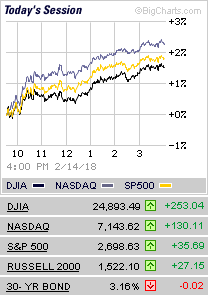Entrepreneurs often do not have a lot of cash set aside for retirement: They’re counting on their business to be their nest egg.
But what many don’t realize is that using conventional loans to make business purchases can ultimately reduce the amount of assets they’ll have available to pay for retirement. The reason: When you use a conventional loan to buy things like vehicles or equipment, you are permanently transferring your wealth to outside financiers.
Here’s an example. Suppose a business takes a $30,000 loan, at five years and 6% interest, to buy a van. After five years, the business has not only paid the bank $4,799 in interest, but it owns a vehicle whose value has depreciated by half, or $15,000. That’s an effective total loss of $19,799.
What if the business pays cash for the van? In that case it avoids interest payments. But it also won’t have that cash available to deploy for other investments. Business people will recognize this as opportunity cost.
There’s another option, however, one used by forward-thinking business owners to enhance their business asset as well as their personal savings. By funding business purchases through custom-designed permanent life insurance policies, these businesspeople take the place of outside financiers.
The result is that the business gets the purchases that it needs, and the business owner gets his or her capital back with interest. Here’s an example using the van purchase:
- The business owner lends the business $30,000 against the cash value that he or she has built up in a personal, permanent life insurance policy.
- The owner sets the terms, including an above-market interest rate.
- As the business makes payments according to a strict schedule, the excess interest is used to grow the insurance policy’s cash value faster than it would grow on its own.
- Even as the $30,000 loan is outstanding, the business owner’s insurance company continues to pay a rate of return—let’s say it’s 5%–on the entire cash value within his or her account. After five years, that interest will amount to $8,288.
After five years, the business owner has been repaid the $30,000 of capital lent to the business. In addition, the business has paid excess interest of $1,698 into the policy. And remember, the insurance company has paid $8,288 in returns on the cash value of the policy. The van has still fallen in value to $15,000, of course. But the outcomes of using a bank loan versus financing the purchase through the business owner’s life insurance policy could not be more different.
The bank-loan route resulted in an effective total loss after five years of $19,799. Using insurance policy financing has resulted in total assets gained of $54,986.
When it comes time to retire, not only will the business owner have the proceeds from the transfer of the business, but he or she will have a whole lot more cash value in that personal life insurance policy.
Funding business purchases is just one way to use custom-designed permanent life policies to enhance your wealth and create financial independence. See our recent blog entries describing this approach here. And don’t hesitate to contact us if you’d like to learn more.

